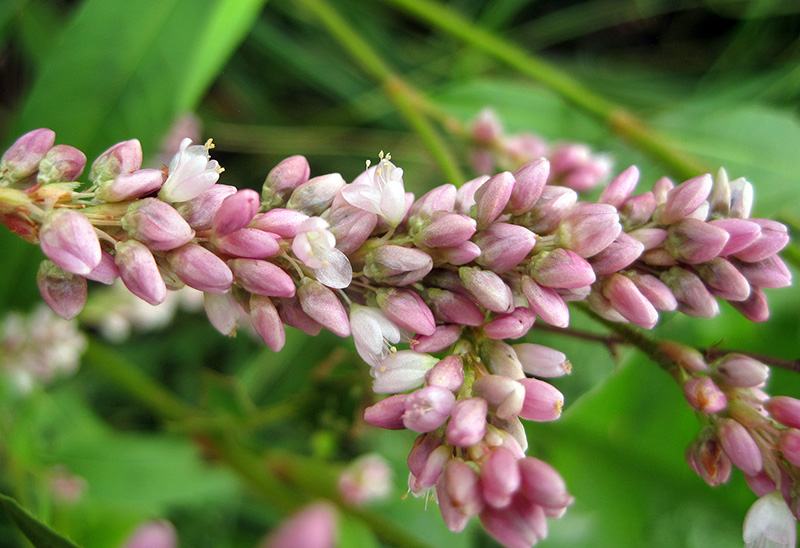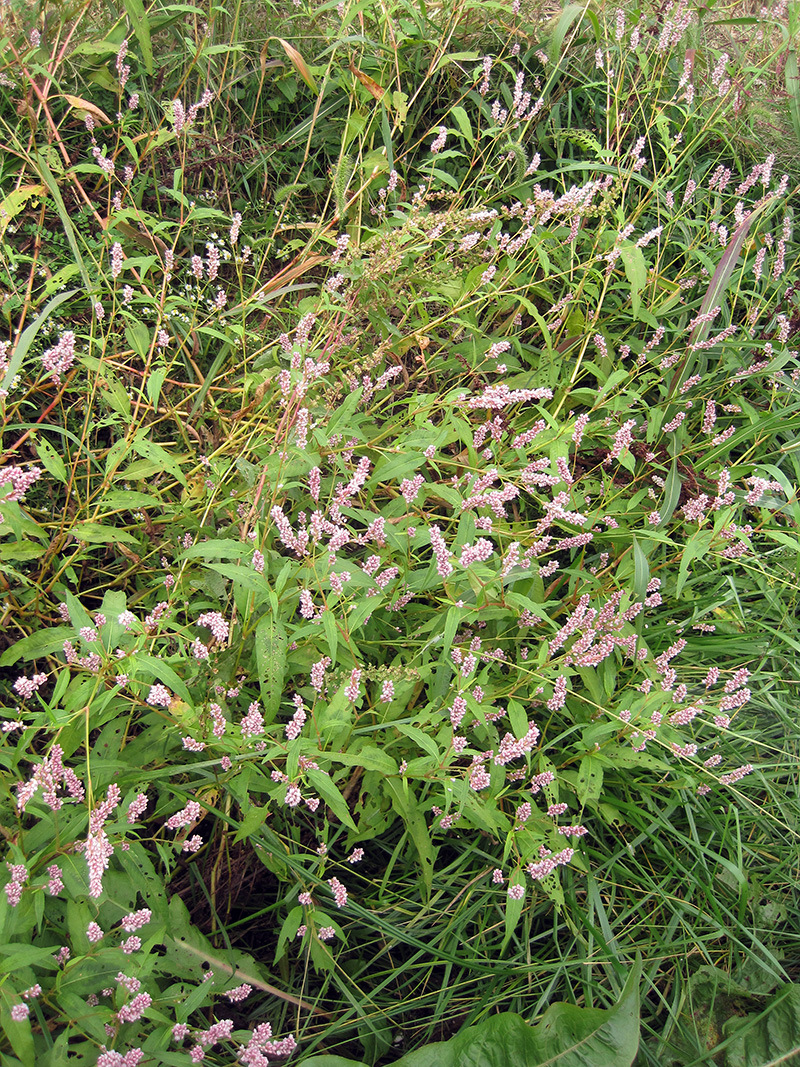Plant of the Week
 Pennsylvania Smartweed (Polygonum pensylvanicum) range map. USDA PLANTS Database.
Pennsylvania Smartweed (Polygonum pensylvanicum) range map. USDA PLANTS Database.
 Close up of flowers © 2012 David D. Taylor
Close up of flowers © 2012 David D. Taylor
 Close up of glandular hairs on upper stems © 2012 David D. Taylor
Close up of glandular hairs on upper stems © 2012 David D. Taylor
Pennsylvania Smartweed (Polygonum pensylvanicum)
By David Taylor
Pennsylvania smartweed is a member of the Polygonaceae (Smartweed) family. The smartweed family includes about 900 species that range from annual herbs to perennial trees. The family includes buckwheat, dock, and rhubarb. The genus Polygonum typically has simple leaves which often have dark blotches on them. Flowers do not have petals but have sepals that mimic petals. In some manuals, Pennsylvania smartweed is called Persicaria pensylvanica (L.) M. Gómez.
This smartweed has tall (up to 2 m (ca. 6 ft)) stems that may be erect or spreading. The leaves are 10-15 cm (4-6 in) long and 2-3 cm (3/4 to 1 1/4 in) wide. The leaves frequently have dark mottling on them. Flowers are produced in 2-4 cm (3/4 to 1.5 in) long clusters at the end of branches. These contain 50-80 pink to dark pink flowers. The upper branches under the flower clusters often have numerous glandular hairs on them (see photo).
Pennsylvania smartweed is found in moist areas at the edge of forests, fields, streams and wetlands, and on roadsides and in waste areas. It is found across the continental United States (including Alaska) except for Washington, Idaho, and Utah. It also occurs in Canada from Manitoba east to Newfoundland.
Numerous species of beetles, flies and bees pollinate this plant. The seeds are eaten by small mammals and birds including waterfowl.



